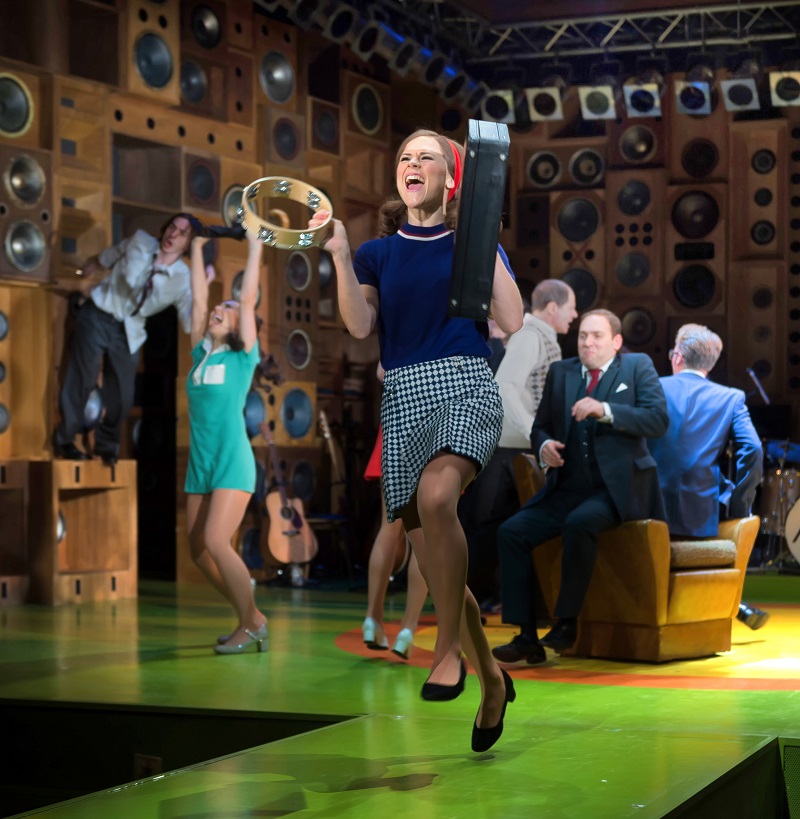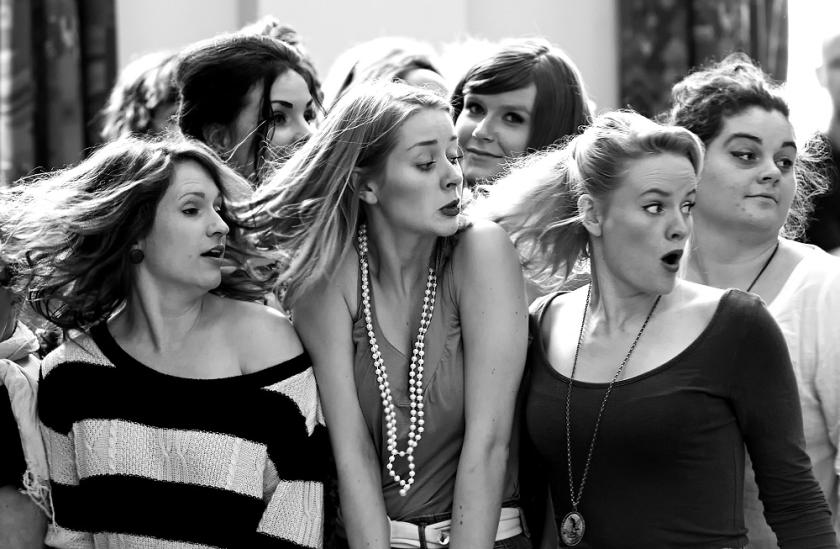We are sitting in the lobby of the National Theatre in the early afternoon waiting for the photocall for Dara to begin. Six or seven photographers, one woman, all dressed in jeans and dark jackets with large camera bags, some on wheels. There is not much conversation. As a relative newcomer I don't normally speak, but on this occasion I venture a remark.
“I have seen this play.”
After a pause one of the company says, “You're keen.”
I explain that I went to a preview. Another silence then, “In one sentence, what's it about?”
“It's about Sharia law.”
Complete silence.
Then Susie arrives and ushers us into the Lyttelton, handing out headshot sheets so that we can identify the players.
The Lyttelton is dark, with the stage illuminated. Straddling the third and fourth rows of the stalls are three large platforms on which are mounted video cameras. They are going to video the scenes in the photocall.
We unpack our bags and get our gear ready. There is a distinct etiquette about these moments. The actors may be milling about on stage but it is bad form to take any pictures until the scenes begin. The National does not want a press shot of an actor out of role, and neither do the other photographers – a level playing field is required.
Sometimes we pretend to be more philistine than we are
We take our positions and someone explains the scenes that are about to happen. The first scene starts and we click away but it's no good. The clicking spoils the video and they decide that they will have to run the scenes twice, once for the video cameras and once for us. We like this, because it gives us a chance to see what's coming. We settle down and watch and then it's our turn. I know one of the actors, Sargon Yelda, because I have photographed him in a number of productions, and I give him a wave. He is a nice guy so he waves back. I hope this increases my credibility, but I am not sure anyone notices.
At the end of one of the scenes one of the actors raises his hands like a boxer. There are a couple of reflexive clicks. “You won't use that will you?” Of course not.
We cover plays for the press and the internet. Theatre photography is quite skilled. The lights tend to confuse the camera metering and there is a constant fight between shutter speed (you want it fast to freeze the action) and aperture (you don't want it too large because of depth of field issues). Photography being what it is you can break all the rules and still get a terrific shot. All decisions have to be made very fast – they don't usually run the scenes more than once. (Pictured below: Amy Ross in Sunny Afternoon.)
 Positioning is everything. The camera cannot hear and will not be spell-bound by the story. What we are looking for is shapes, faces and interaction. Two actors standing ten feet apart in a line facing the audience may be compelling theatre but it is no good to us because we can't get both in shot. If we go right to one side we might be able to get them both, but one will look much smaller than the other and we will be lucky if we see both faces. We move about as a herd as the action changes, keeping an eye on each other for two reasons – to see what the opposition is doing, and not to get in the way. Doing that will mean a howl of protest. Moving quickly between lines of seats is not easy, especially if a large photographer is standing there oblivious to everything except his shot.
Positioning is everything. The camera cannot hear and will not be spell-bound by the story. What we are looking for is shapes, faces and interaction. Two actors standing ten feet apart in a line facing the audience may be compelling theatre but it is no good to us because we can't get both in shot. If we go right to one side we might be able to get them both, but one will look much smaller than the other and we will be lucky if we see both faces. We move about as a herd as the action changes, keeping an eye on each other for two reasons – to see what the opposition is doing, and not to get in the way. Doing that will mean a howl of protest. Moving quickly between lines of seats is not easy, especially if a large photographer is standing there oblivious to everything except his shot.
Directors and designers like a wide shot of the stage, but a shot like that won't normally tell a story to someone who doesn't know the play.
I have a theory that it's best to stand slightly house right. This is because an actor doesn't normally face straight out at the audience. He or she will stand like a swordsman, which mean that a right-handed actor will put his right foot slightly forward so that his face turns slightly stage left, house right. I tried this theory out on another pro who just said, “Don't count on it.”
At the end of a scene the director sometimes asks us if that was OK. The bolder spirits among us sometimes ask for changes.
“Could they get a bit closer together?”
“Could we see their faces as they kiss?”
“Could we re-run the fight and could they look up more?”
“Could we get more light on his face?”
The answer to the last one is usually no. The director isn't going to alter the lighting, but the answer to, “Could he move a bit downstage into the light?” might be yes. And fights might be re-run unless there is blood, when we only get one crack at it because they are not going to change costume and clean up just for us.
Sometimes we pretend to be more philistine than we are. When a young director starts to tell me the inner meaning and symbolism of his play I am tempted to say, “Look, mate, I'm the photographer. Any nudity? Any fighting?” But experienced pros will sometimes predict the critics' star rating after a photocall, and they are more often right than not. That is not to say that a play which appeals visually will also please the critics. I enjoyed photographing Islands at the Bush recently but Aleks Sierz, my colleague at theartsdesk, described it as “pretty shit”.
Shooting for theatres and production companies is different from shooting just from the press. You get to see and photograph the rehearsals including the dress rehearsal. Photographing rehearsals is what I really like. Shooting the finished production has many challenges but it is all laid out for you in terms of lighting, blocking etc. At rehearsal you can stand where you want if you don't get in the way, the lighting will have challenges all of its own and you get to see the same scene a number of times, which must be a help. Rehearsal snaps used to be in black and white (it saved money on the programme printing). These days they are sometimes in colour, which reveals another reason for black and white – the actors' choice of clothing for rehearsal. The worst is words on clothing – Hamlet in a T-shirt which says, “Mr. Right - limited time offer.”
Next time you see a theatre or opera photograph, check the photo credit – and do please complain if there isn't one.
- Bill Knight takes photographs for theartsdesk and for a number of theatres and companies including English Touring Opera, British Youth Opera, the Gate and HighTide Festival. His website is www.knightsight.co.uk
Overleaf: browse a gallery of Bill Knight's theatre and opera photographs
Click on the thumbnails to enlarge















Add comment